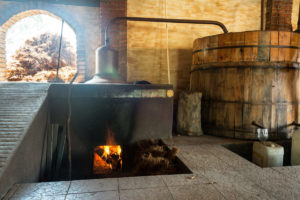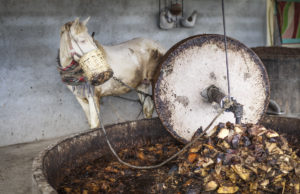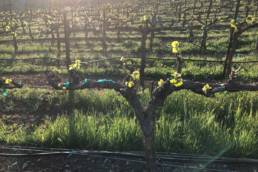Mezcal – just Tequila with a worm, right?
Mezcal (the other Agave Spirits)
The short answer is, “wrong”. But those of you who know me or my writing over the last decade understand why I cannot just leave it there. It begs an explanation of just why a spirit that has been made for centuries can still be so misunderstood and confused with its younger sibling, Tequila.
Some of these issues come from our brains trying to pigeon-hole things for better understanding and less complication. All facial tissue becomes Kleenex, all lip lube – ChapStick, and all plastic containers to store food – Tupperware. One can see an easy transition to Tequila becoming the name for all agave-based spirits; but it is drastically incorrect.
Although similar to Tequila, Mezcal can be made with the blue agave, but it does not necessarily have to be. It has a broader spectrum of agave that can be used for its production, about 30 different types in total. Mezcal has recently changed the rules of production that the spirit must come from 100% agave, unlike tequila (“mixto” level). Also, like Tequila, it has a protected designation for production zones. So, agave-based spirits produced outside those zones cannot use the name Mezcal, even if they follow all other rules of production; a smart way to keep states in the American southwest from producing their own agave spirit and calling it Mezcal.
Also, like Tequila, it has a protected designation for production and can only be produced in the following states of Mexico: Oaxaca, Michoacan, Puebla, Guerrero, Zacatecas, Guanajuato, Tamaulipas, San Luis Potosi, Durango and Sinaloa. This gives Mezcal more variability of terroir expression due to different types of agave being indigenous to different production zones. The agave types are identified on the label and there is a guide at the end of this content piece to help you with flavor profiles.

To further confuse the consumer, the production processes are very similar between these two spirits. The leaves are cut away and the piñas are harvested and cooked to convert the starches into fermentable sugar. Traditional Mezcal piñas are roasted in an Horno de Tierra (earthen oven). Using the dried leaves of the agave and locally harvested wood a fire is built in the pit and, at the decision of the producer, river rocks of volcanic stones are placed to allow some separation between the fire and the piñas. The oven is covered with dirt, sand and rock and allowed to bake for up to 6 days.

To extract this sugary juice from the fibrous piñas, they traditionally used a large stone wheel (tahona) pulled by a mule (today sometimes a tractor). Another more labor-intensive tradition is placing the piñas in a hollowed-out tree trunk and, with large wooden clubs, treat them like Joe Pesci’s character in the movie Casino.
The sugary liquid is then moved to fermentation vessels and the yeast goes to work over the next one to three weeks, converting to a low alcohol liquid (5 -10% abv), called tepache. The tepache is then distilled, first to 20 -30% abv and then a second time to reach the minimum of 36%. Most final alcohol content vary but hover around 40 – 50% abv. Unlike many other spirits, Mezcal purists feel that the final Mezcal should not be reduced (added water) to render the industry expected 40% abv.
It is important to note that there are many Mexican states that don’t fall under the denomination for Mezcal or Tequila but might still produce distillates of agave. These are called ‘Aguardiente de Agave’ as they are not allowed to be called Mezcal or Tequila. Other agave spirits such as Bacanora, Raicilla and Sotol each have their own set of regulations and will be a future conversation.
Types of Mezcal
Categories (sub) of Mezcal have specific production process restrictions and stipulations (style of oven usen, how the piñas are crushed and even the type of still used) necessary to fall into those categories.
The first set of styles represents categories based on type of production:
- Mezcal – can be made using modern techniques
- Mezcal Artesanal – a blend of old techniques with some certain allowed modern elements
- Mezcal Ancestral – pretty much made all old school. Labor intensive and not very common.
Aging:
- Blanco / Joven: unaged (most are in this category)
- Resposado: “rested” or aged in wood for 2 – 12 months
- Añejo: aged in wood for more than a year
- Madurado en vidrio: aged in glass. Traditional way of letting the spirit mellow without losing alcohol content
Popular types of Agaves used in Mezcal:
Espadín: This is the most popular type of agave used in Mezcal, up to 85% of Mezcal produced. It grows faster than many agave types and can produce higher sugar levels and therefore more volume of spirit. Also is very closely related to the blue agave used in Tequila.
Arroqueño: These are huge plants and the piña can weigh over 400 pounds. Mezcals made from this variety are often described as having floral, green or even spicy characteristics.
Tobalá: They are known for being more difficult to grow and propagate, taking 10 -15 years to reach maturity. Also, due to low inulin, it has the reputation of being harder to produce Mezcal from. When these agaves are used and done properly, they can be one of the more elegant displays of Mezcal, with pronounced floral and fruity aromas and a lighter body. It is often the preferred variant for many Mescaleros who produce mescal artisanal.
Tepeztate: These agaves take 25- 35 years to reach maturity and have notorious low yields. They tend to showcase flavors from rich, peppery and earthy to tropical fruit and even cologne-like.
*This is not an all-inclusive list as there are many other varieties grown throughout Mexico. It would be fun to do a future comparative tasting, in the name of science, of course.
Suggested Cocktails for Mezcal:
El Bandito
(From Montelobos Mezcal producer)
- 1 part Montelobos Mezcal
- 1 part Ancho Reyes Verde
- 1 part fresh lime juice
- ½ part simple syrup (or caramel simple syrup)
- Mix all components and shake. Pour in a glass with ice. Garnish with lime and mint.
Quicksand
(From Del Maguey Mezcal producer – created by Ryan Fitzgerald, San Francisco)
- 1 ½ ounces Del Maguey Vida Single Village Mezcal
- ¾ ounce Dry Curaçao
- ¾ ounce Maurin Quina (really cool stuff)
- 4 dashes orange bitters
- 1 wide orange peel, for garnish
Combine all the ingredients, except the garnish, in a mixing glass filled with ice and stir. Strain into a chilled cocktail glass. Garnish with the orange peel.
Oaxacan Margarita
(From Bozal Mezcan producer)
- 2 oz. Bozal Ensamble
- 1 oz. Fresh Lime Juice
- .5 oz. Agave Nectar
Add components with ice in shaker and shake for 7 -8 seconds. Strain into black salt rimmed glass over ice. Garnish with dehydrated citrus wheel.




